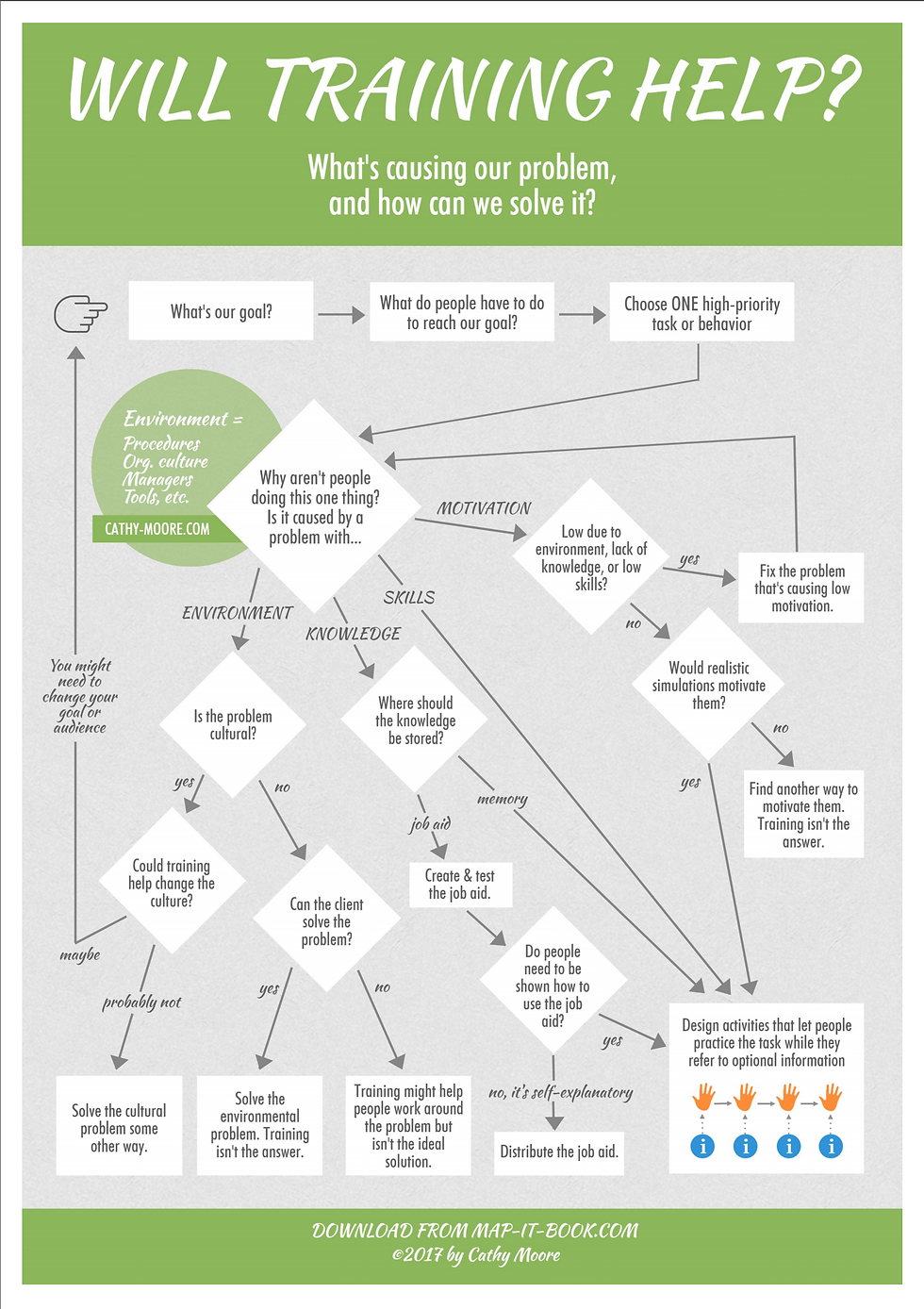Action Mapping
- Admin

- Nov 9, 2020
- 2 min read
What is Action Mapping?

One top expert on action mapping, Cathy Moore, defines it as a visual approach to instructional design. It's a "streamlined process to design training in the business world." Action mapping has three main goals: measurably improve performance of learner, narrow down the best solution to the performance issue, and create real-world practice for learners. This design process should be highly collaborative and works well for both elearning design or business training. Here's a quick slideshow made by Cathy Moore laying out the concept:
Basic design process:
Customer says "I need a course!"
Plan a two-hour meeting between stakeholders to share a mind map (brainstorming). Include the subject matter experts and the client.
Identify your business goals, how to measure success, and identify behaviors needed to reach the goal.
Confirm that training is the solution (it might not be), and how the training will be supported by managers and workplace changes, etc.
Work with subject matter experts (SME) to brainstorm and prototype practice activities for each behavior needed to reach the goal. If possible, test on learners (beta test).
Get approval from client
Decide what's the minimum amount of info needed for each activity, how to provide it.
Create a storyboard. The activities determine the organization of the course.
The client and SME approve the script and production can begin.
Once being utilized, measure your training product's impact and success level.
Download PDF:

Remember, action mapping is different from brainstorming or mind mapping. Everything mapped out must directly link back to your learning goals, "actions". The purpose of the action map is to intentionally build the training without casually adding random ideas as you think of them. Think of brainstorming as non-action mapping and the next level would be action mapping- putting action to ideas.




Comments